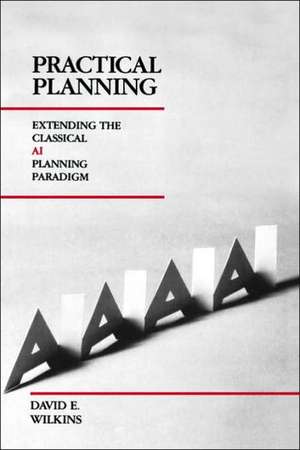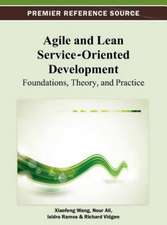Practical Planning: Extending the Classical AI Planning Paradigm
Autor David E. Wilkinsen Limba Engleză Hardback – 24 dec 1988
Practical Planning is an in-depth examination of this classical planning paradigm through an intensive case study of SIPE, a significantly implemented planning system. The author, the developer of SIPE, defines the planning problem in general, explains why reasoning about actions is so complex, and describes all parts of the SIPE system and the algorithms needed to achieve efficiency. Details are discussed in the context of problems and important issues in building a practical planner; discussions of how other systems address these issues are also included.
Assuming only a basic background in AI, Practical Planning will be of great interest to professionals interested in incorporating planning capabilities into AI systems.
Preț: 435.29 lei
Preț vechi: 565.31 lei
-23% Nou
Puncte Express: 653
Preț estimativ în valută:
83.30€ • 90.45$ • 69.97£
83.30€ • 90.45$ • 69.97£
Carte tipărită la comandă
Livrare economică 22 aprilie-06 mai
Preluare comenzi: 021 569.72.76
Specificații
ISBN-13: 9780934613941
ISBN-10: 093461394X
Pagini: 205
Dimensiuni: 161 x 236 x 20 mm
Greutate: 0.51 kg
Editura: ELSEVIER SCIENCE
ISBN-10: 093461394X
Pagini: 205
Dimensiuni: 161 x 236 x 20 mm
Greutate: 0.51 kg
Editura: ELSEVIER SCIENCE
Cuprins
1 Reasoning about Actions and Planning
2 Basic Assumptions and Limitations
3 SIPE and Its Representations
4 Hierarchical Planning as Differing Abstraction Levels
5 Constraints
6. The Truth Criterion
7 Deductive Causal Theories
8 Plan Critics
9 Resources: Reusable, Consumable, Temporal
10 Search
11 Replanning During Execution
12 Planning and Reactivity
13 Achieving Heuristic Adequacy
14 Comparison with Other Systems
2 Basic Assumptions and Limitations
3 SIPE and Its Representations
4 Hierarchical Planning as Differing Abstraction Levels
5 Constraints
6. The Truth Criterion
7 Deductive Causal Theories
8 Plan Critics
9 Resources: Reusable, Consumable, Temporal
10 Search
11 Replanning During Execution
12 Planning and Reactivity
13 Achieving Heuristic Adequacy
14 Comparison with Other Systems


























